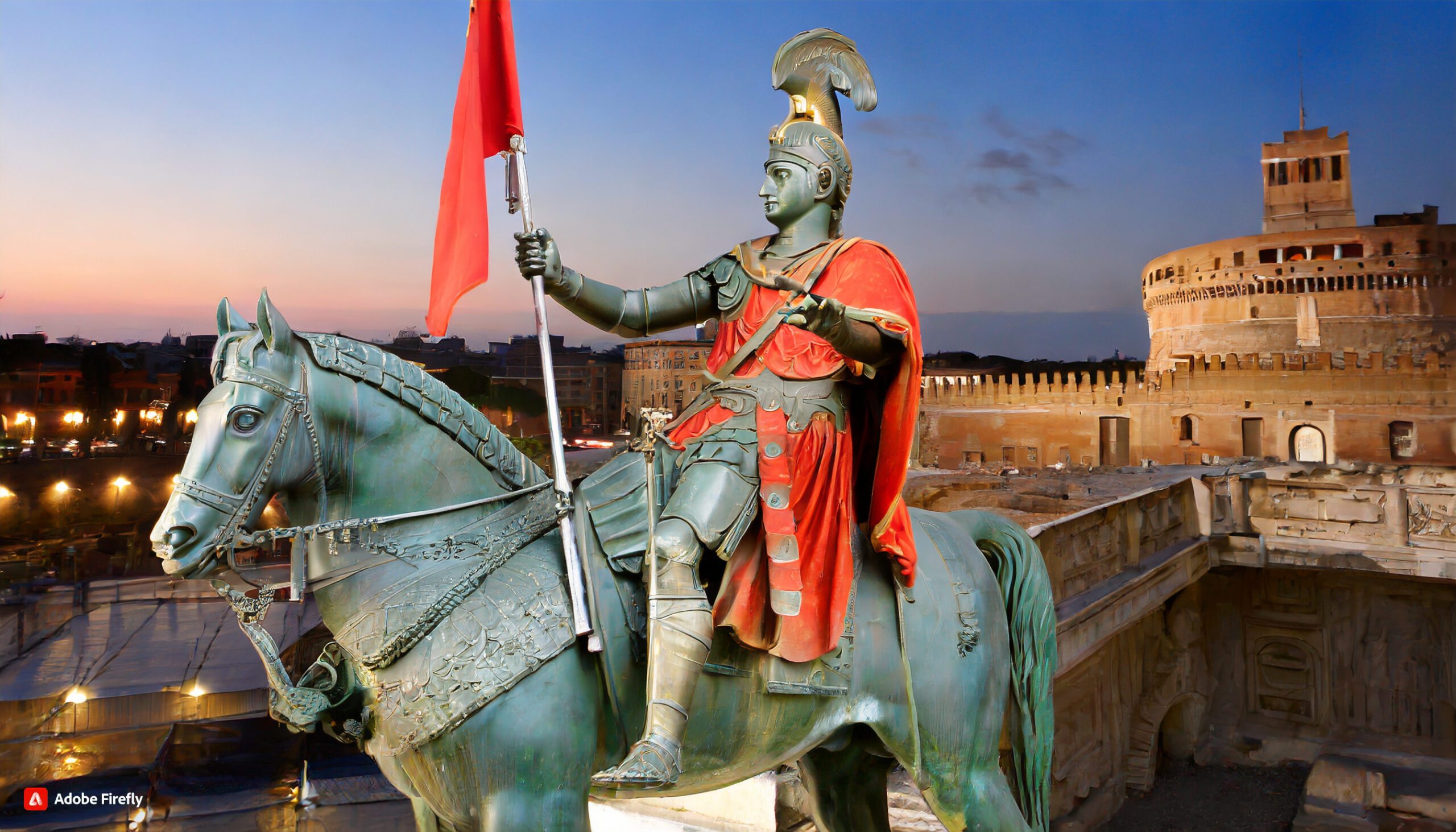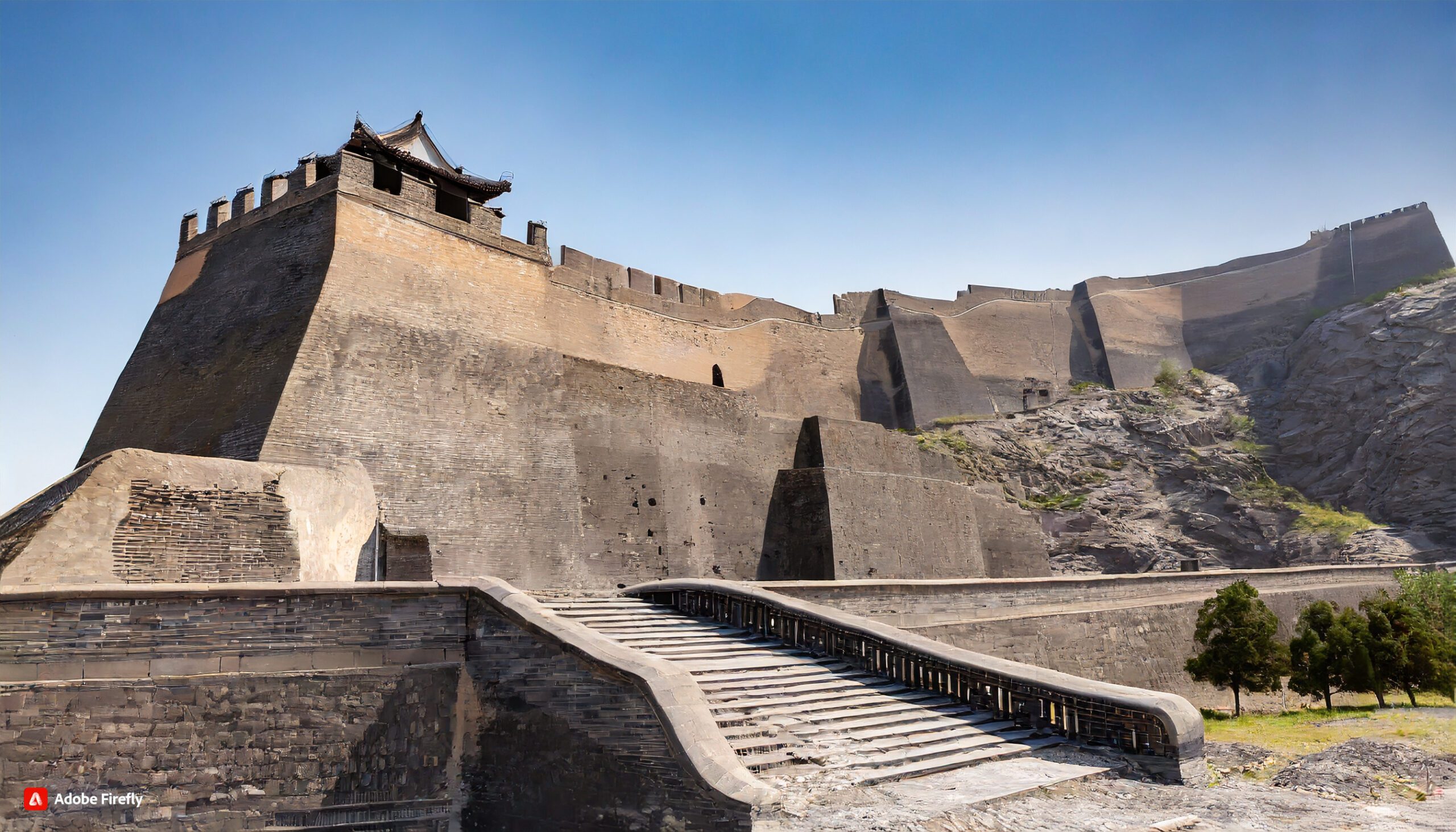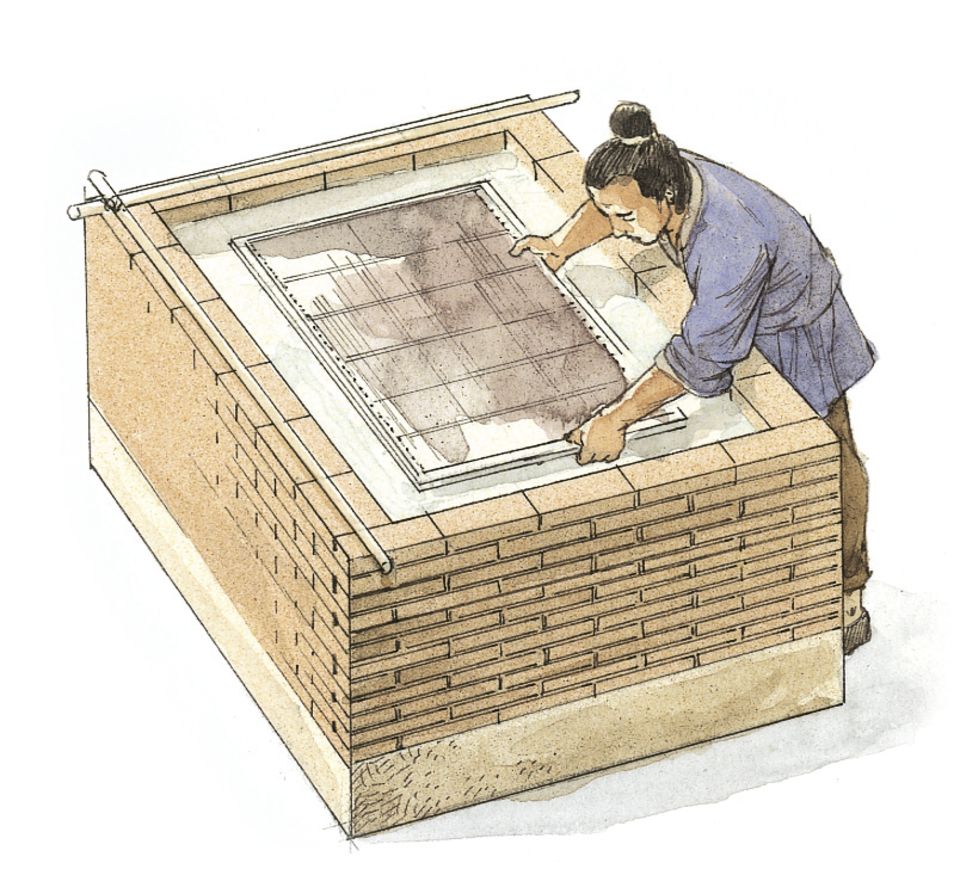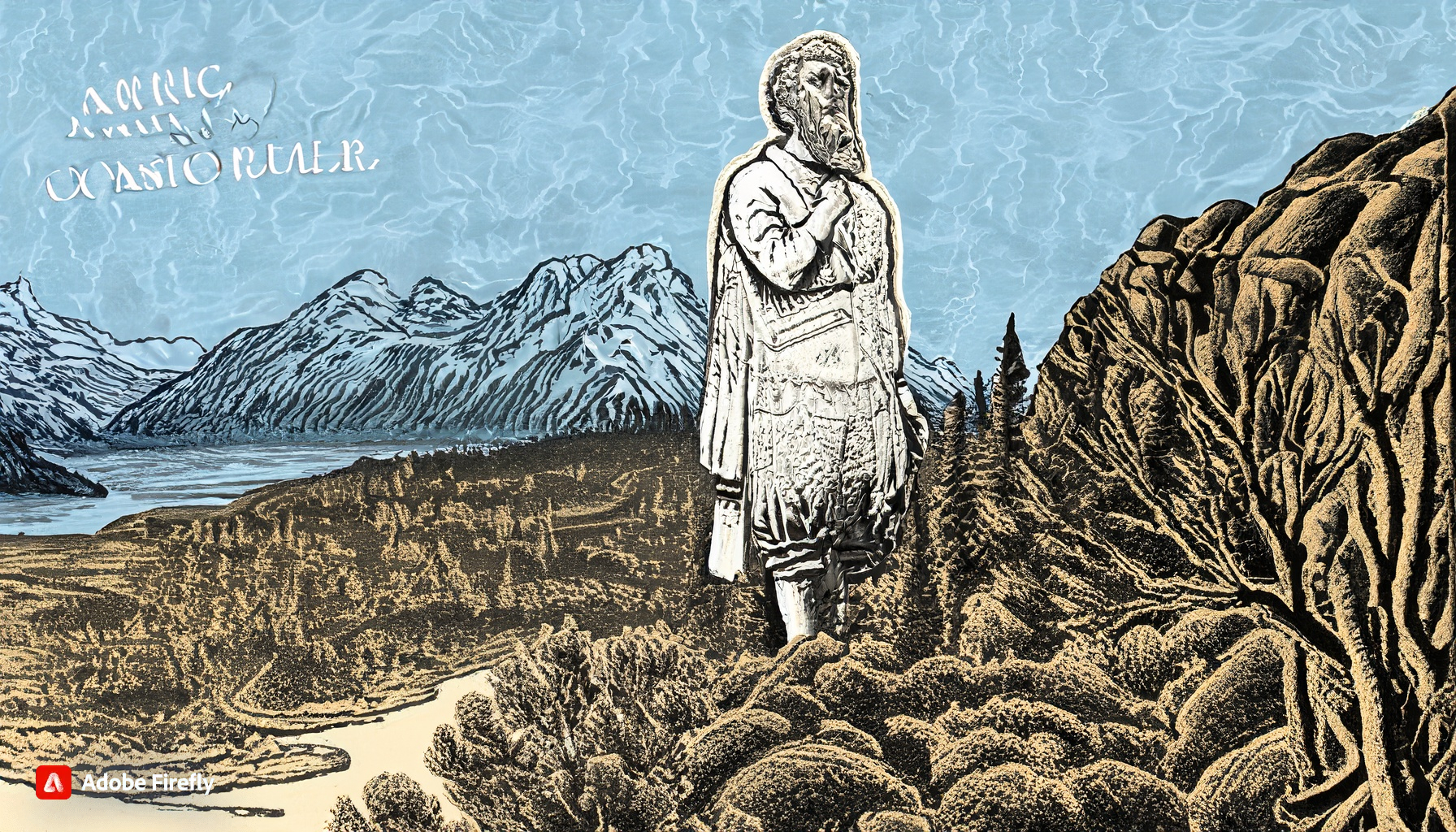Introduction
“1st Century Chronicles: Ten Pivotal Moments in Time” delves into an era that laid the foundation for countless facets of human history. This century, often overshadowed by later periods, witnessed a series of events that left an indelible mark on civilization. From the emergence of world-changing religions to the relentless conquests of ambitious rulers, and from technological advancements to intellectual milestones, the 1st century AD shaped the course of humanity. In this exploration, we uncover ten pivotal events, each with its unique significance, revealing the rich tapestry of accomplishments, innovations, and challenges that defined this remarkable period.
“The Birth of Jesus: A Divine Beginning”

Unique and Interesting Facts:
- Mysterious Timing: The exact birth date of Jesus is still a subject of debate among scholars, but it is traditionally celebrated on December 25th, likely chosen to coincide with various pagan festivals and the winter solstice.
- The Nativity Story: The birth of Jesus is a central narrative in the New Testament, described in the Gospels of Matthew and Luke. It features angels, shepherds, and the visit of the three wise men or Magi from the East.
- Virgin Birth: According to Christian tradition, Mary, the mother of Jesus, conceived him through the Holy Spirit, marking his birth as a divine miracle.
- Bethlehem: The birthplace of Jesus, Bethlehem, is a small town in the West Bank and a significant pilgrimage site for Christians worldwide.
- Messianic Prophecies: The birth of Jesus fulfilled several Old Testament prophecies, which played a crucial role in affirming his identity as the Messiah.
- Widespread Celebration: Christmas, the annual celebration of Jesus’ birth, is observed by billions of people worldwide, regardless of their religious beliefs, and has become a global holiday of love, hope, and giving.
- Nativity Scenes: The tradition of creating Nativity scenes with figurines depicting the birth of Jesus dates back centuries and is a common Christmas decoration.
- Cultural Impact: The story of Jesus’ birth has inspired countless works of art, music, literature, and films, contributing to a rich cultural legacy.
- Interfaith Significance: Jesus is recognized as a significant figure in Islam, and his birth is mentioned in the Quran, highlighting his universal impact.
- Theological Implications: Beyond the historical and cultural significance, the birth of Jesus holds profound theological meaning for Christians, representing the Incarnation, where the divine became human to bring salvation to humanity.
“Augustus: The Zenith of the Roman Empire”


Unique and Interesting Facts:
- Reshaping Rome: Augustus, originally known as Octavian, rose to power after the turmoil following the assassination of Julius Caesar. He effectively ended the Roman Republic and ushered in the Roman Empire, setting a precedent for future emperors.
- The First Emperor: Augustus was the first person to hold the title “Emperor of Rome.” He ruled from 27 BC until 14 AD, establishing a dynasty that would last for centuries.
- Pax Romana: Under Augustus, the Roman Empire experienced a period of relative peace and stability known as the Pax Romana, which facilitated remarkable economic growth and cultural achievements.
- Reforms and Administration: Augustus introduced numerous administrative and legal reforms, including the creation of a professional civil service and an efficient postal system. He also overhauled the Roman tax system.
- Propaganda and the Res Gestae: Augustus left a remarkable written testament to his rule, the “Res Gestae Divi Augusti,” a public inscription detailing his achievements and political ideology.
- Architectural Legacy: He embarked on an ambitious building program in Rome, constructing iconic structures such as the Forum of Augustus and the Ara Pacis Augustae (Altar of Augustan Peace).
- Cleopatra and Antony: Augustus emerged victorious in the power struggle against Mark Antony and Cleopatra, effectively ending the Roman Republic’s civil wars.
- Family and Succession: Augustus’ family played a significant role in Roman politics. His stepsons Tiberius and stepson-in-law Agrippa succeeded him as emperors.
- Deification: After his death, Augustus was deified and became the subject of imperial cult worship. His legacy as a divine ruler had a profound influence on subsequent Roman emperors.
- Lasting Impact: Augustus’ reign and vision for Rome left a profound and enduring impact on the empire, shaping its governance, culture, and future development for centuries to come.
“The Great Wall of China: A Monument of Ancient Engineering”


Unique and Interesting Facts:
- A Massive Endeavor: The construction of the Great Wall began in the 3rd century BC and continued for centuries. It consisted of various walls and fortifications, with a combined length of over 13,000 miles (21,196 kilometers).
- The Wall’s Purpose: Contrary to a common misconception, the Great Wall was not built to be visible from space but served as a series of defensive fortifications to protect China from invasions by nomadic tribes.
- Diverse Builders: It wasn’t solely a Chinese project. The wall was constructed by a multitude of laborers, including soldiers, peasants, and prisoners. Some portions were built with tamped earth, while others used stone and bricks.
- Mortal Peril: The construction of the Great Wall was perilous work, and it’s estimated that hundreds of thousands of laborers lost their lives during its construction, leading it to be called the “Longest Cemetery on Earth.”
- Ever-Changing Wall: Over the centuries, various dynasties and rulers extended, rebuilt, and maintained the wall, adding their unique architectural touches.
- UNESCO World Heritage: The Great Wall of China was designated as a UNESCO World Heritage Site in 1987, recognizing its cultural significance and architectural marvel.
- An Astronomical Reference: Some sections of the wall were built with alignment to celestial bodies, demonstrating ancient Chinese knowledge of astronomy.
- Not a Single Wall: Contrary to the singular name, the Great Wall comprises multiple walls, often running parallel or perpendicular to each other, forming an intricate network of defenses.
- Symbol of China: The Great Wall is an enduring symbol of Chinese strength and determination, making it one of the most iconic landmarks in the world.
- The Myth of Visibility from Space: Despite popular belief, the Great Wall is not easily visible from space without aid. Astronauts have noted that it is hard to distinguish from the surrounding terrain due to its narrow width and earth-toned materials.
The Great Wall of China is not just a physical barrier; it’s a testament to the ingenuity, determination, and enduring legacy of ancient Chinese civilization.
“The Han Dynasty: A Millennia-Long Reign”


Unique and Interesting Facts:
- Two Eras: The Han Dynasty is divided into the Western Han (206 BC – 9 AD) and the Eastern Han (25-220 AD), with a brief interruption known as the Wang Mang’s Xin Dynasty (9-22 AD).
- Rise from Rebellion: The Western Han was founded by Liu Bang, who was originally a peasant and rebel leader. His victory over the Qin Dynasty marked the beginning of the Han Dynasty.
- The Silk Road: The Han Dynasty played a pivotal role in the establishment and expansion of the Silk Road, connecting China to Central Asia, the Middle East, and the Mediterranean world.
- Civil Service Examinations: The Han Dynasty introduced a system of civil service examinations based on Confucianism, which became a model for later Chinese dynasties.
- Scientific Achievements: Han scholars made significant contributions to astronomy, mathematics, and medicine. They invented the first seismoscope, calculated pi accurately, and developed acupuncture.
- Paper Invention: Cai Lun, a Han Dynasty official, is credited with inventing paper from mulberry bark, rags, and other plant fibers.
- Confucianism as State Ideology: Confucianism was adopted as the official state ideology, shaping the moral and ethical framework of Chinese society.
- Terracotta Army: The tomb of Emperor Qin Shi Huang, the first emperor of China, contains the famous Terracotta Army, which dates to the early Western Han period.
- The Yellow Turban Rebellion: The Eastern Han faced challenges, including the Yellow Turban Rebellion, a massive peasant uprising influenced by Daoism.
- Legacy: The Han Dynasty’s legacy is profound, as it set the foundations for Chinese governance, culture, and identity, and it serves as a symbol of unity and prosperity in Chinese history.
“The Fiery Fury: Pompeii and Herculaneum’s Fate in the Shadow of Mount Vesuvius”


Unique and Interesting Facts:
- A Catastrophic Eruption: On August 24, 79 AD, Mount Vesuvius, a dormant volcano in southern Italy, violently erupted, releasing an immense column of ash, pumice, and volcanic gases.
- Unforeseen Disaster: The inhabitants of Pompeii and Herculaneum had no prior warning of the eruption and were caught completely off guard.
- Preservation through Destruction: The volcanic ash and debris that buried the two cities also preserved them remarkably well. The conditions, such as the absence of air and moisture, contributed to the remarkable state of preservation over the centuries.
- Rediscovery Centuries Later: Pompeii and Herculaneum remained buried and forgotten until their accidental rediscovery in the 18th century, revealing a glimpse into everyday Roman life.
- Lavish Lifestyle: Archaeological excavations have unearthed elaborate villas, frescoes, mosaics, and well-preserved artifacts, showcasing the opulent lifestyle of the Roman elite.
- Tragic Loss of Life: Thousands of residents and refugees died during the eruption. Some were found huddled together in protective poses, their last moments captured in ash.
- The Great Unmasking: Plaster casts were created by archaeologists to preserve the shapes and positions of the victims, allowing modern observers to see the horror of the event.
- Cultural Insights: The excavations provide invaluable insights into ancient Roman society, architecture, art, and daily life, enriching our understanding of the past.
- Ongoing Research: Ongoing archaeological work at these sites continues to yield new discoveries and knowledge about the ancient world.
- UNESCO World Heritage Sites: Pompeii and Herculaneum are UNESCO World Heritage Sites, drawing visitors from around the world to witness the enduring impact of this natural catastrophe on human history.
“Paper’s Genesis: China’s Pioneering Invention”


Unique and Interesting Facts:
- Ancient Origins: The invention of paper in China is attributed to Cai Lun, a eunuch and official during the Eastern Han Dynasty, around 105 AD.
- Predecessors and Progress: While Cai Lun is credited with significant advancements, paper-making techniques had been evolving in China for centuries before his time.
- Diverse Materials: Early paper in China was crafted from an assortment of materials, including mulberry bark, hemp, and old fishing nets.
- Improved Pulp and Processing: Cai Lun’s key innovation was refining the paper-making process. He created a consistent pulp mixture by breaking down fibers and then pressing and drying the pulp into thin sheets.
- Versatile Material: The use of paper quickly expanded beyond writing to become a versatile material for artwork, packaging, and other purposes.
- Cultural Implications: The invention of paper played a pivotal role in the spread of Chinese culture and knowledge, as it was instrumental in the dissemination of books, literature, and technology.
- Transmission to the West: Through the Silk Road and other trade routes, the knowledge of paper-making eventually reached the Islamic world and later, Europe, where it revolutionized communication and printing.
- Impact on Printing: Paper was crucial for the development of the printing press and the mass production of books, profoundly shaping the course of human history.
- Contemporary Significance: Even in the digital age, paper remains a critical and enduring medium for communication, documentation, and artistic expression.
- Environmental Considerations: The ongoing challenge is to find sustainable and eco-friendly ways to produce paper, respecting its ancient origins and its contemporary importance in our lives.
“The Crucifixion of Jesus: A Profound Turning Point”


Unique and Interesting Facts:
- Historical Debate: The precise dates and details of Jesus Christ’s crucifixion have been debated by scholars. Most estimates place it between 30 and 33 AD during the Roman rule of Judea.
- Religious Significance: For Christians, the crucifixion is a central event, seen as the atonement for humanity’s sins and the means of salvation.
- Execution Method: Crucifixion was a brutal and agonizing form of punishment in the Roman world, involving the victim being nailed to a wooden cross.
- Role of Pontius Pilate: According to the New Testament, Jesus was condemned to crucifixion by Pontius Pilate, the Roman governor of Judea, despite finding no fault in him.
- The Passion: The events leading up to Jesus’ crucifixion, known as the Passion, include the Last Supper, betrayal by Judas Iscariot, arrest in the Garden of Gethsemane, trials before Jewish and Roman authorities, and the Via Dolorosa, or the Way of Suffering.
- Crucifixion Place: The traditional site of Jesus’ crucifixion is the Church of the Holy Sepulchre in Jerusalem, although there are other proposed locations.
- Symbolic Icon: The crucifix, an image of Jesus on the cross, is a powerful symbol in Christian art and worship, representing sacrifice, redemption, and hope.
- Universal Significance: Jesus’ crucifixion is not only a religious event but has also influenced art, literature, culture, and philosophy worldwide.
- The Resurrection: According to Christian belief, Jesus was resurrected from the dead on the third day after his crucifixion, an event celebrated as Easter.
- Cross as a Symbol: The Christian cross, an enduring symbol, serves as a reminder of Jesus’ crucifixion and his teachings of love, forgiveness, and salvation.
“The Spiritual Odyssey: The Spread of Buddhism Across Asia”


Unique and Interesting Facts:
- Origins in India: Buddhism was founded by Siddhartha Gautama, known as the Buddha, in the 6th century BC in what is now Nepal and India.
- Key Doctrines: Buddhism’s core principles include the Four Noble Truths, the Eightfold Path, and the concept of Nirvana, which offers a path to enlightenment and liberation from suffering.
- Ashoka’s Influence: Emperor Ashoka, a major proponent of Buddhism, played a pivotal role in spreading the religion throughout India and beyond in the 3rd century BC.
- The Silk Road Connection: Buddhism’s expansion was significantly aided by trade routes such as the Silk Road, which facilitated the exchange of ideas, texts, and art across Asia.
- Branches and Schools: Over time, Buddhism developed into various branches, including Theravada, Mahayana, and Vajrayana, each with distinct interpretations and practices.
- Southward Migration: Buddhism spread to Sri Lanka in the 3rd century BC, which is home to some of the oldest Buddhist traditions and texts.
- Northward Journey: The transmission of Buddhism to Nepal, Tibet, and China through pilgrims, merchants, and missionaries, like Bodhidharma, who is credited with bringing Buddhism to China.
- The Far East: Buddhism found its way to Japan and Korea in the 6th century AD and shaped their cultures, influencing art, language, and philosophy.
- Tibetan Buddhism: The unique form of Vajrayana Buddhism practiced in Tibet has had a profound impact on the region, becoming intertwined with Tibetan culture and identity.
- Worldwide Presence: Today, Buddhism has millions of adherents worldwide and continues to influence diverse cultures and societies, emphasizing peace, mindfulness, and spiritual enlightenment.
“The Roman Colosseum: An Icon of Ancient Engineering Triumph”


Unique and Interesting Facts:
- Grand Arena: The Roman Colosseum, also known as the Flavian Amphitheatre, was completed in 80 AD under the rule of Emperor Titus. It stands as one of the most iconic examples of Roman engineering and architecture.
- Massive Structure: The Colosseum could accommodate between 50,000 to 80,000 spectators, making it the largest amphitheater in the Roman Empire.
- Ingenious Design: Its elliptical shape and tiered seating allowed for efficient crowd management and visibility, and a complex system of elevators and trapdoors facilitated elaborate performances.
- Blood Sports: The Colosseum is infamous for hosting gladiatorial contests, chariot races, and mock sea battles, providing entertainment and a display of power by the Roman emperors.
- Colossal Masonry: The exterior was adorned with travertine limestone and featured three levels of arches, with statues and columns adorning the façade.
- Engineering Feats: Awnings, called the velarium, were stretched overhead to shield spectators from the sun. An intricate network of tunnels and chambers beneath the arena housed animals, gladiators, and machinery.
- Cultural and Political Symbol: The Colosseum was a symbol of Roman grandeur and the Flavian dynasty. It was also a place where the masses could be entertained and distracted from political and economic challenges.
- Medieval Transformation: In the Middle Ages, the Colosseum was repurposed as housing, workshops, and a fortress, leading to significant structural alterations.
- Modern Restoration: Over the centuries, the Colosseum has faced damage from earthquakes and stone-robbers, but extensive restoration efforts have preserved its historic significance.
- UNESCO World Heritage: Today, the Colosseum is a UNESCO World Heritage Site and a prominent symbol of Rome and the ancient world, attracting millions of tourists each year.
“The Fiery Fury: Mount Vesuvius Unleashes Destruction in 79 AD”


Unique and Interesting Facts:
- Catastrophic Event: On August 24, 79 AD, Mount Vesuvius, a stratovolcano located near the Bay of Naples in Italy, erupted violently, spewing ash, pumice, and gases into the atmosphere.
- Pompeii and Herculaneum: The eruption engulfed and buried the Roman cities of Pompeii and Herculaneum, preserving them under layers of volcanic ash and pumice.
- Unprecedented Preservation: The preservation of these cities provides a remarkable window into daily life in ancient Rome, offering insights into architecture, art, cuisine, and culture.
- Ongoing Rediscovery: Pompeii and Herculaneum remained hidden for centuries until their accidental rediscovery in the 18th century, sparking a fascination with archaeology and ancient history.
- Lethal Pyroclastic Flow: The eruption released a deadly pyroclastic flow, a superheated mix of gas, ash, and rock, which overwhelmed the cities and caused mass casualties.
- Artifacts and Bodies: Excavations have revealed an array of artifacts, including frescoes, mosaics, pottery, and even the casts of people and animals caught in the eruption.
- Pliny the Younger’s Account: The Roman author Pliny the Younger’s letters provide one of the few surviving contemporary accounts of the eruption and its impact on the region.
- Ongoing Volcanic Threat: Mount Vesuvius remains an active volcano, posing a continuing risk to the millions of people who live in its vicinity.
- UNESCO World Heritage: Pompeii, Herculaneum, and the neighboring archaeological sites are designated as UNESCO World Heritage Sites, attracting visitors from around the world.
- Valuable Scientific Insight: The study of the Vesuvius eruption has enhanced our understanding of volcanology and disaster management, particularly regarding the potential impact of future eruptions on densely populated areas.






